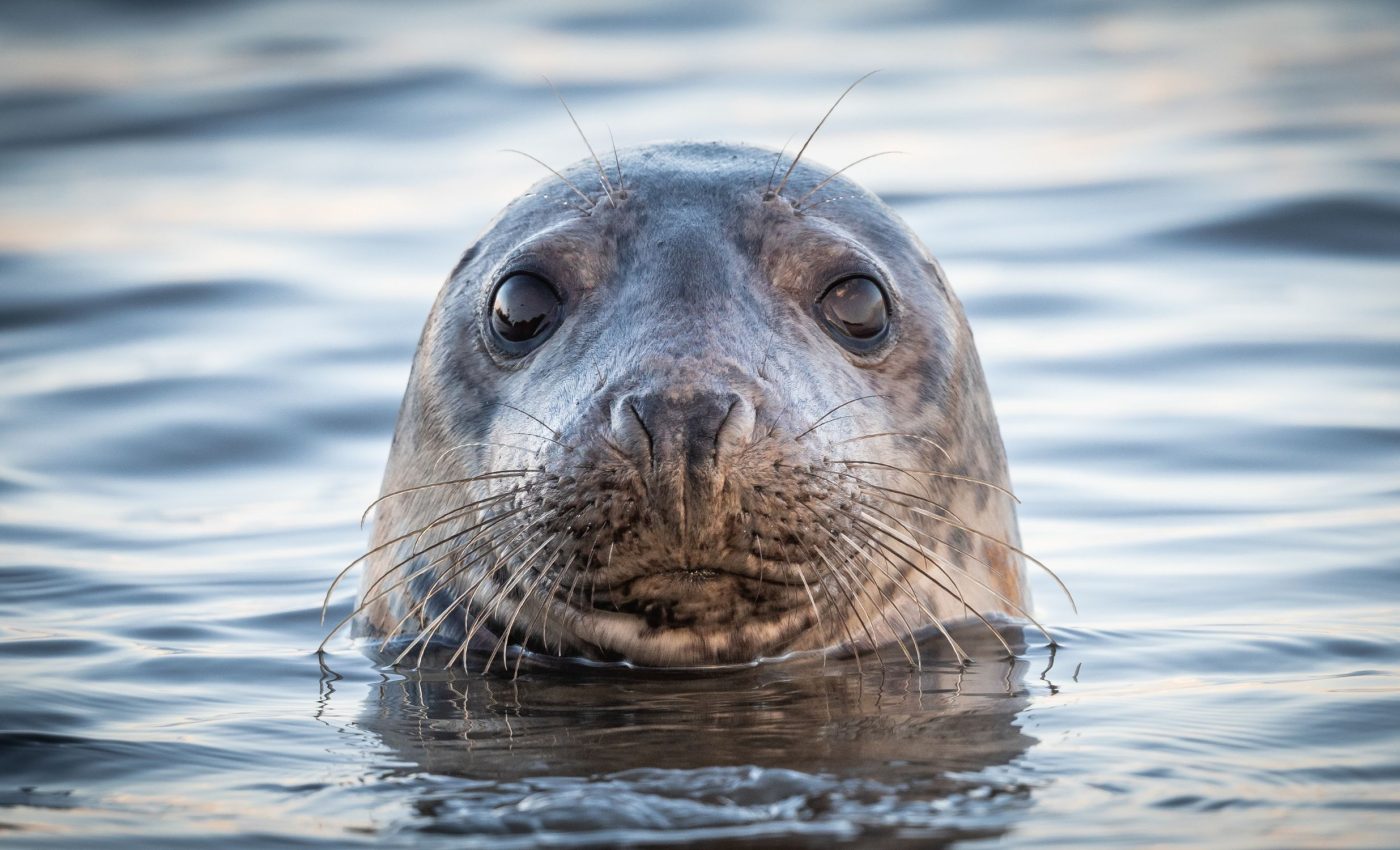
Harbor seals rely on visual cues to navigate cloudy waters
When you dive into cloudy water, vision often fails. You might only see a few centimeters ahead. But harbor seals (Phoca vitulina) don’t struggle. These animals glide confidently through turbid seas. They use many senses, including touch via their whiskers. Yet scientists asked: Can seals also rely on sight?
“We wanted to know whether harbor seals can determine their heading from optic flow fields,” said Frederike Hanke from the University of Rostock in Germany.
Optic flow is the pattern created on the retina as animals pass objects or particles. Hanke and her team decided to test this idea in a unique way – through gaming.
Testing the visual flow of harbor seals
The researchers designed three virtual scenes. One scene showed dots mimicking particles in open water. Another simulation showed a seabed moving below, while the third showed surface movement above.
The scenes replicated the visual flow a swimming seal would experience. Three harbor seals – Nick, Luca, and Miro – viewed the simulations.
The seals were trained to identify direction (left or right) by tapping a red ball near their heads. Sprats were given as rewards. “Miro is a very open-minded seal, so coped with all new situations easily,” noted Hanke.
Harbor seals use visual flow to navigate
In this experiment, the seals were shown visual simulations where the motion of dots indicated that they were “swimming” slightly to the left or right. These directional shifts, called heading angles, ranged from just 2 degrees to as much as 22 degrees away from the center of the screen.
The goal was to see if the seals could recognize and report whether they appeared to be moving left or right based only on how the dots flowed across the screen.
Importantly, the researchers avoided giving the animals any obvious markers to use – no crosses, no fixed lines, no cues anchored to the screen. In earlier experiments, seals used such reference points to judge direction. But the ocean doesn’t usually provide these kinds of steady visual anchors.
Objects in water move, scatter light, or disappear. So this experiment focused on pure optic flow – the natural visual motion created by swimming through a field of floating particles.
Seals detect angle changes
The seals’ performance was measured using heading accuracy thresholds (HATs). A lower threshold means better sensitivity: the seal could correctly identify its heading even with only a small angle of deviation. The results were striking.
When the simulation mimicked movement through a general cloud of particles (volume optic flow), the average HAT across the three seals was 4.61 degrees, with very little variation.
When the dots simulated movement above the seabed (surface optic flow), the average HAT was 4.96 degrees. And when the flow came from above, imitating the water’s surface moving past, the seals performed best of all, with an average HAT of 3.58 degrees.
The results demonstrate that harbor seals can rely on very subtle visual shifts in their environment to understand which direction they are heading.
Impressively accurate navigation skills
Even without clear landmarks or bright light, the seals’ eyes and brains are tuned to detect flow patterns with impressive accuracy – enough to support real-world navigation in cloudy coastal waters.
Three human participants also took part. They had HATs around 1° for all optic flow types. While humans outperformed seals slightly, the seals’ performance still showed strong optic flow perception skills.
Interestingly, experience made a difference. Luca, an experienced seal, learned the task faster than Miro, who was new to experiments.
But in the end, all three performed equally well. This shows that, regardless of training history, harbor seals can learn and apply visual strategies to navigate.
Learning how harbor seals navigate
Harbor seals rarely find themselves in total darkness. They stay near shore and have sensitive eyes.
Even dim light allows the seals to detect enough contrast to see optic flow. This ability helps with not just heading but also speed control, obstacle avoidance, and possibly distance estimation.
The optic flow fills a large portion of their field of vision, especially beneath or within the water. That could explain why their accuracy was slightly better in those conditions compared to above-water flow. Still, they performed well in all scenarios.
Future studies aim to test whether seals can use optic flow to judge how far they’ve traveled. If so, it would suggest these animals perform complex navigational tasks using vision alone.
Movement itself changes how animals sense the world. This study reminds us that studying stationary animals tells only part of the story. For seals, motion is not just travel – it is also perception.
The study is published in the Journal of Experimental Biology.
—–
Like what you read? Subscribe to our newsletter for engaging articles, exclusive content, and the latest updates.
Check us out on EarthSnap, a free app brought to you by Eric Ralls and Earth.com.
—–













